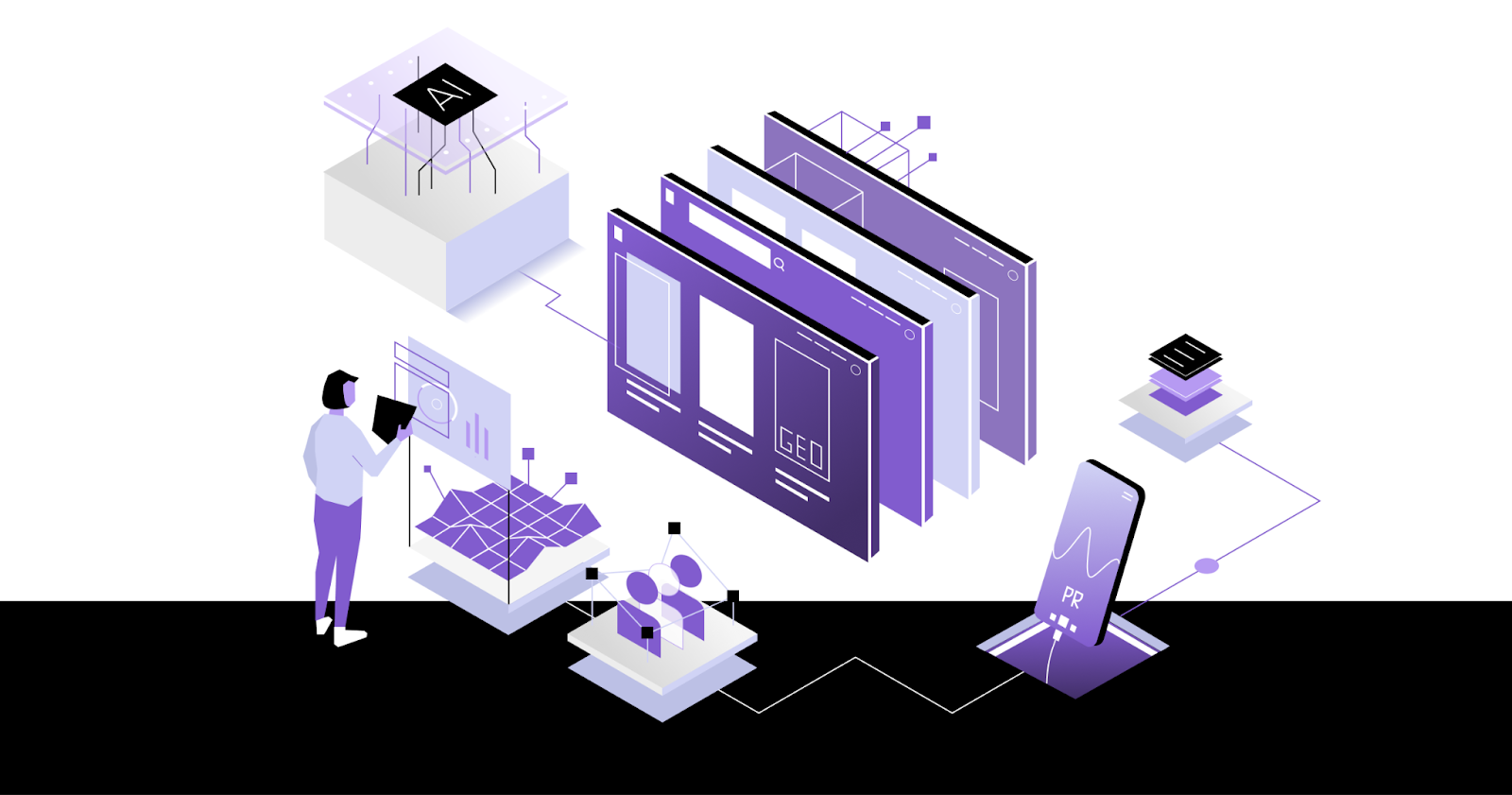
PR, SEO and the rise of GEO: How we’re adapting to the new rules of search
In digital marketing, we’re used to things changing. Algorithms update, platforms shift, tools come and go. But every so often, something bigger comes along-something that makes us rethink how everything fits together.
That’s where we are with Search Engine Optimisation (SEO) right now.
It’s not just that Google has updated how it presents results. It’s that the way people access information is fundamentally evolving. They’re not just typing in keywords anymore. They’re asking full questions. They’re speaking naturally. They’re getting summaries. They’re getting answers, often without ever visiting a webpage.
With the rise of AI-generated responses, whether through Google’s AI Overviews, ChatGPT or other large language models (LLMs), what used to work in SEO doesn’t always cut through anymore. The rules are shifting. And if you work in content, PR or SEO, you need to understand what that means.
GEO is not a trend
Many have taken to calling it GEO (Generative Engine Optimisation) but you can think of it as AI Search Optimisation. Whichever name you use, the point remains the same: brands are being surfaced by AI not just because they’ve nailed their keywords, but because they’re seen as credible, trusted and authoritative by something other than Google’s opaque algorithm.
That changes the game. It’s no longer just about what your brand says about itself, on its own site. It’s about what others are saying. Where you’re being referenced. How consistently you’re showing up across all earned and owned channels.
And that’s exactly where PR enters the picture.
What this looks like in practice
This isn’t theory, we’re already putting this into practice. One recent example is the work we developed for a tech platform that connects people with freelance local services. In that kind of marketplace, trust and authority are everything. The brand operates in a highly competitive, high-volume search space, but with a noticeable reputation gap among consumers.
We knew traditional SEO alone wasn’t going to move the needle. So we built something more integrated.
A visibility plan built for AI
For this particular client, we didn’t just create an SEO strategy. We created a visibility strategy built around a joined-up approach across PR, SEO and content that considered how AI engines understand and rank information.
Here’s what that meant:
- Earned media was central, not a bolt-on. We prioritised coverage in trusted, high-authority publications-not just to build awareness, but to strengthen the brand’s credibility with AI models that use these signals when recommending sources.
- Content was structured for both humans and machines. We built out FAQs, guides, glossaries and comparison content that answered real questions in clear, scannable ways. AI loves that kind of structure-and users do too.
- Thought leadership was used strategically. We focused on profiling the client’s leadership team through expert commentary and original insight, to reinforce topical authority and brand voice-again, for both human and machine audiences.
- PR, SEO and content teams planned together from the start. This is the bit that makes it all work. Shared goals, shared data, shared planning. That’s how you build consistent signals that AI can recognise and trust.
From clicks to citations
This shift also changes how we measure success. Traditional SEO is all about traffic: clicks, visits, conversions. But GEO asks a different question: what if they don’t click?
If your brand is cited in an AI-generated answer, or summarised in a way that gives the user what they need instantly, that’s still a win. You’re building authority. You’re influencing decisions. You’re staying visible even when there’s no website visit in sight.
We’ve started measuring things like AI mentions, sentiment in summaries and changes in branded search volume. It’s early days, but the direction of travel is clear: AI needs to understand and trust your brand if it’s going to recommend it.
So where does this leave us?
This is more than just a technical update, as it shows where the whole industry is heading. It creates a clear opportunity for teams that have traditionally worked separately to collaborate more closely. While many companies have already started breaking down these barriers, this change shows that business benefits are now too clear to ignore.
If you’re leading digital strategy in 2025, PR, content and SEO can’t be run in silos. You need teams working in sync to build authority in the places that matter. Generative engines are evaluating your entire presence: what others say, what you say, how consistently you say it.
The brands that adapt fastest will be the ones that continue to be seen.
If you’d like to discuss the GEO and the evolution of PR in the digital age, or simply want to know how your brand can sustain its visibility, get in touch.



